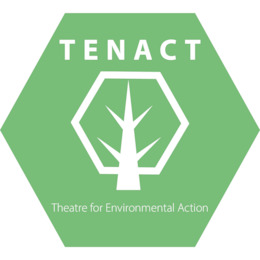Toolbox — For Training and Youth Work
All new tools in your inbox: Be the first to know about new tools for learning with our e-mail notifications.
Manual
TENACT toolkit
This project aims to develop dramatic tools and resources so that youth workers and drama practitioners can implement theatre and drama activities, workshops and programmes on environmental issues.
Aims of the tool
This project aims to develop dramatic tools and resources so that youth workers and drama practitioners can implement theatre and drama activities, workshops and programmes on environmental issues. Teachers and facilitators can use this toolkit to implement new and innovative educating methods in their daily work. By that we want to impact on the self-reflection and self-efficacy abilities of the young people in the topic of environment and we found drama to be a useful method for that. The young people will jump into different roles physically and emotionally to create scenes and situations, and this makes theatre about environmental issues even more powerful.
In this sense, we developed this toolbox with drama activities and tools on environmental issues that can be included in a minimum of 10 full workshops of a duration between 2 or three hours. Theatre has many advantages as a tool in youth work: principally that it is a collabo- rative activity and it is very successful in achieving personal transformation. As such, it is very useful in youth work programmes that attempt to promote democratic values, and shift disaffected young people from a position of apathy or anger into one of social engagement and dialogue.
Description of the tool
This toolkit offers a diverse range of activities designed to facilitate discussions and exploration of environmental issues through the medium of theatre. The activities are categorized into three types: conversation starters, core activities, and reflection activities, each serving a specific purpose in the learning process.
The toolkit is intentionally designed to provide flexibility and adaptability. While we propose various uses for these activities, they are by no means limited to those suggestions.
By integrating these activities, drama facilitators can engage young participants in exploring environmental themes through theatrical expression and creative methodologies.
Beyond the realm of youth theatre, these activities have broad applicability in different contexts. For instance, they can serve as icebreakers during environmental conferences, seminars, and events, setting a participatory and engaging tone for discussions on pressing ecological concerns.
Experienced facilitators are encouraged to unleash their creativity and tailor the activities to suit the specific needs and goals of their participants.
In the realm of youth theatre, these activities have been thoughtfully crafted and tested by three youth theatres with regular workshops for young people. Their successful implementation in these settings makes them valuable additions to general youth theatre programs.
It is nonetheless designed with the idea of flexibility in mind. In this section we will propose ideas for different uses of these activities, but they are in no way limited to these and can be used in many other ways that any experienced facilitator may think of.
Available downloads:
Disclaimer
SALTO cannot be held responsible for the inappropriate use of these training tools. Always adapt training tools to your aims, context, target group and to your own skills! These tools have been used in a variety of formats and situations. Please notify SALTO should you know about the origin of or copyright on this tool.
Tool overview

http://toolbox.salto-youth.net/4170
This tool addresses
Youth Participation, Environment
It is recommended for use in:
Youth Exchanges
Behind the tool
The tool was created by
Unknown.
(If you can claim authorship of this tool, please contact !)
The tool was created in the context of
Cooperation partnership
The tool was published to the Toolbox by
Gregor Ruttner-Vicht (on 29 April 2024)
and last modified
24 April 2024
Comments
No comments have been posted yet.
If you want to comment on this tool, you need to be signed in with your MySALTO account. Sign in now